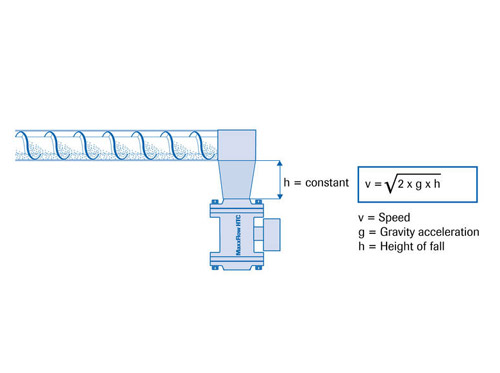
After the conveyor, the material to be measured falls or slides through an inlet path and runs through the sensor. During the throughput, the MaxxFlow HTC records the material type and speed. Since the material falls from a constant height after emerging from the conveyor element, the speed of the product stream is accelerated, but is constant at the installation position of the sensor.
Due to this constant speed, the speed measurement does not need to be activated in every case, but can be calculated as a constant depending on the height of the fall. The mass flow is determined as follows:
Q (kg/s) = K (kg/m3) x v (m/s) x A (m2)
Through the input coupling of a high-frequency, electro-magnetic alternating field, a homogenous measuring field is generated in the measuring tube.
The measuring tube (interior tube of the sensor) consists of wear-resistant Al2O3ceramics. Dry bulk solids inside the measuring field reduce the amplitude of the alternating field.
This leads to a measuring signal that is in proportion to the concentration of the dry bulk solids in the sensor (kg/m3).